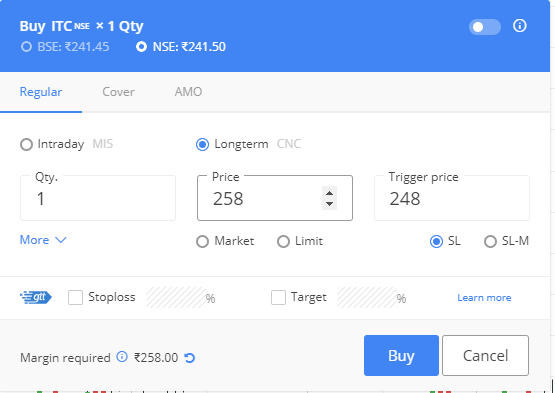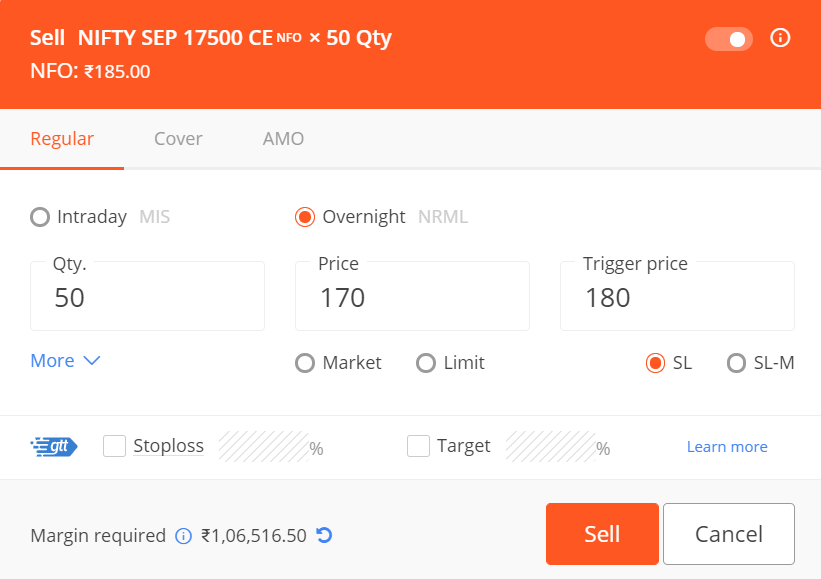How to use Stoploss-limit(SL) order like a Stoploss-Market(SLM) order?
A trade that gets executed at a significantly distant price from the current market price is commonly referred to as a freak trade. These trades usually occur due to shallow market depth, which results in low liquidity. Another factor that can contribute to a freak trade is when a trade coincides with a large market order.
Placing a market order inherently carries the risk of potential losses due to a freak trade, while a limit order provides the advantage of price execution at a specified level, thus avoiding a freak trade but without a guarantee of order fill. However, combining the benefits of both order types is possible, allowing for the price protection offered by a limit order (eliminating the risk of a freak trade) while still enjoying the order fill guarantee typically associated with a market order.
Use Stoploss limit order as Stoploss market orders.
A Stoploss order is a type of order where a trigger price is specified, leading to the placement of either a limit order or market order. These triggers are set within the exchange system, not the broker systems.
Similar to using a limit order as a market order, the SL - L (stop loss limit) order can also be used as an SL-M (stop loss market) order. To do this, a limit price needs to be provided, which is higher or lower than the trigger price, depending on whether the intention is to buy or sell.
Example Scenario
- Stock: ITC
- Position: Short
- Short Price: ₹245
- CMP: ₹241
- SL Trigger: ₹248
- SL Limit: ₹258
In this scenario, the SL limit buy order at ₹258 will be placed as soon as the market price reaches the SL trigger price of ₹248. However, since ₹258 is significantly higher than the current market price of ₹241, the limit price essentially functions as a market order and gets filled within the range of ₹248 and ₹258 when the market hits ₹248.
In the event that another large market order coincides with your order, the limit price at ₹258 serves as protection against a freak trade, mitigating the risk of unexpected price fluctuations.

Similarly, when a SL sell limit order is placed with a price below the current market price, the SL limit order will function as an SL market order.
Example Scenario
- Assume a long position is held on Nifty 17500 CE with a current price of ₹185.
- A SL limit sell order is placed at ₹170, triggered at ₹180.
- Given the current market price of ₹185 and the placement of the SL limit sell order at a lower price, the order will function as a market order and execute immediately.
- Consequently, all available quantities will be sold for up to ₹170.
- In the event of a large market order coinciding with the placed order, potentially resulting in a price spike, the limit order ensures protection by restricting the sell price to ₹170.
- This restriction prevents the sell price from going lower and provides a safeguard against adverse price fluctuations.

To learn how to use limit order as a market order, see
How to use limit order as a market order?
Did you know? NSE has stopped supporting SL-M order type for options from Sep 27th 2021.
Still need help?


